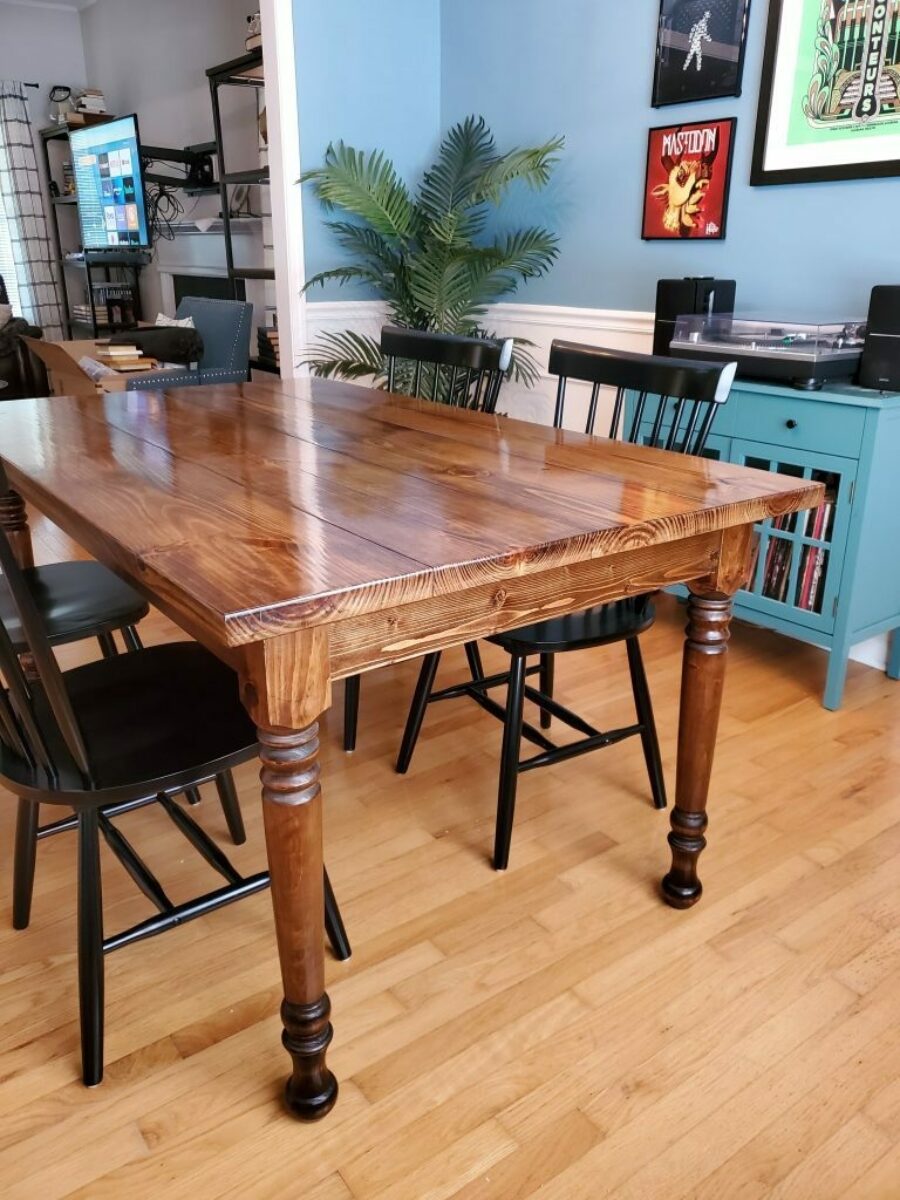Dining Room Table Legs: What to Take into consideration Prior To You Buy
Dining Room Table Legs: What to Take into consideration Prior To You Buy
Blog Article
An In-depth Take A Look At Table Leg Styles: Finding the Perfect Suit
Selecting the right table leg style is essential for both aesthetic allure and functional functionality. Traditional 4 legs provide timeless elegance and security, while the pedestal base gives boosted legroom and a modern appearance. For those with larger tables, trestle legs ensure tough support, whereas barrette legs introduce a mid-century modern ambiance with their minimalist style. The x-shaped legs blend modern style with boosted stability. Each of these alternatives brings distinct advantages, making the option more than simply a matter of choice. Explore additionally to discover which design flawlessly complements your eating area and way of life.
Traditional Four Legs
Among the various kinds of eating table leg designs, the standard four-leg style stays a timeless choice for many households. 4 legs give well balanced support, guaranteeing the table remains secure and qualified of birthing substantial weight (dining room table legs).
From an aesthetic viewpoint, the typical four-leg style can be easily adapted to numerous interior styles. Whether crafted from timber, steel, or a combination of products, these legs can be elaborately carved, sleek and minimalistic, or anything in between. Their convenience enables them to complement both rustic and modern setups perfectly.
Moreover, the uncomplicated framework of the four-leg design helps with convenience of activity and positioning within a space. Unlike more facility bases, this style minimizes blockages, offering enough legroom for diners. In recap, the standard four-leg dining table leg design marries sustaining beauty with sensible performance, making it a sharp option for those looking for both type and feature in their dining furnishings.
Pedestal Base
Usually celebrated for its classy and space-efficient style, the stand base is a prominent choice to the conventional four-leg arrangement in table leg designs. This distinctive base generally includes a single central column sustaining the tabletop, which can vary in type, from ornately sculpted wood to smooth, modern-day metal. Among the key advantages of the pedestal base is its capacity to make best use of legroom and seating flexibility. Without edge legs, restaurants are afforded greater flexibility of activity, making it a perfect option for round and oblong tables that advertise more intimate and inclusive events.
Additionally, the stand base's main assistance can manage significant weight, permitting making use of heavier tabletops, such as marble or thick hardwood. This strength paired with its visual versatility makes the stand base a preferred selection in both traditional and modern indoor setups. It can flawlessly incorporate with numerous style motifs, from traditional elegance to minimal modernity. In addition, the main column itself uses a canvas for elaborate designs and artistic expressions, including an element of visual rate of interest beneath the table. In summary, the pedestal base incorporates performance snappy, making it an improved and practical choice for diverse eating environments.
Trestle Legs
Trestle legs provide a durable and classic structure for eating tables, characterized by their straight cross-bracing and strong assistance beams. Originating from medieval times, this design has developed yet kept its crucial framework, making it a seasonal fave in both traditional and modern setups. The central trestle light beam, typically supported by 2 or even more vertical posts, offers remarkable security, permitting larger table sizes without the need for extra legs.
A significant benefit of trestle leg tables is the ample legroom they supply. Unlike tables with 4 edge legs, the lack of obstructions at the table's sides supplies unobstructed area for chairs and restaurants, improving comfort and accessibility. This makes trestle tables optimal for fitting bigger gatherings, whether in a dining-room or a reception hall.
The visual flexibility of trestle legs is noteworthy. Readily available in a range of products such as wood, metal, and composite, they can be completed to match a broad range of indoor styles. From rustic farmhouse to smooth contemporary layouts, trestle legs can be personalized to suit private tastes. Their enduring appeal and practical advantages make trestle legs an engaging selection for those looking for both style and usefulness in their dining table.
Barrette Legs

The allure of hairpin legs hinges on their simplicity and flexibility - dining room table legs. Offered in a series of products, consisting of steel and brass, they can be completed in various shades to complement different interior designs. Whether coupled with a rustic wood table top over at this website or a contemporary glass surface area, hairpin legs easily blend capability with a touch of vintage charm
Longevity is an additional significant feature of hairpin legs. Despite their fragile appearance, these legs are engineered to birth significant weight, guaranteeing the dining table stays stable and protected. In addition, they are relatively easy to mount, making them a popular selection for DIY enthusiasts and specialist furniture makers alike.
X-Shaped Legs

Built from products such as steel, wood, or a combination of both, X-shaped legs can be customized to match various layout choices. Steel legs typically offer a sleek and industrial feel, ideal for loft-style apartment or condos and modern eating rooms. On the various other hand, wood X-shaped legs offer a warmer, much more rustic appeal, appropriate for farmhouse or diverse insides. The convenience in materials permits homeowners to personalize their dining tables to better fit their overall style scheme.
Moreover, the engineering behind X-shaped legs makes sure even weight circulation, decreasing the danger of wobbling and improving durability. This makes them specifically fit for bigger table that need extra assistance. Basically, X-shaped legs blend sensible design with contemporary looks, making them an ageless selection for varied dining environments.
Final Thought
A comprehensive understanding of eating table leg styles reveals the distinctive attributes and benefits of each layout. Trestle legs make sure robust assistance for larger tables, and barrette legs introduce a mid-century modern visual.
Report this page